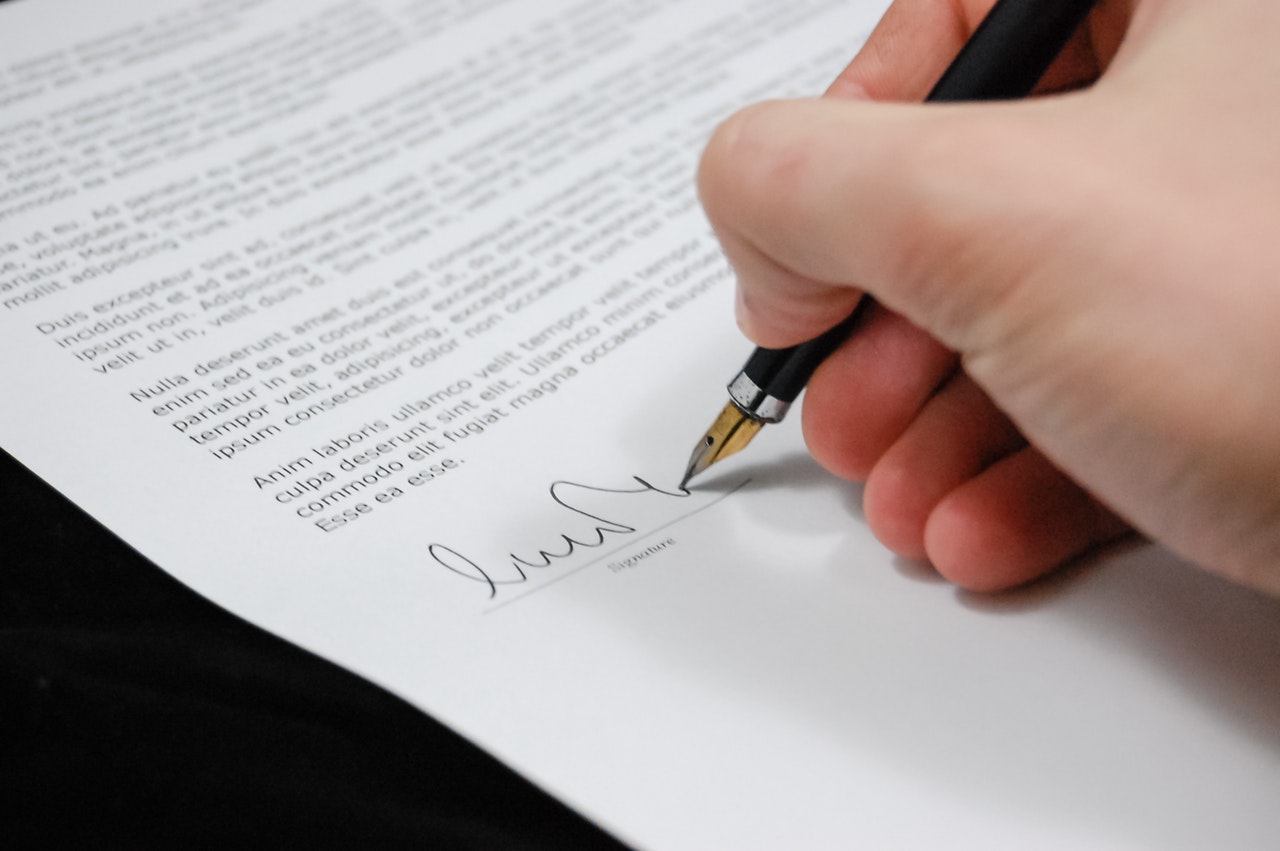Whether you’re a commercial photographer working on solo projects, a hired photographer working on a contract basis, or a Microstock photographer selling media content through Microstock websites, chances are that at some point you will likely require a property and/or model releases to license your content commercially.
What is a model/property release
A model release is a legal release signed by the subject of a photograph or video clip granting you permission to use or publish media content in one form or another.
A property release is a legal release signed by the owner of property used in a photograph or video clip granting you permission to use or publish the subject in one form or another.
With shooting people or architecture an additional worry that contributors should have is to avoid being sued!
Generally, unauthorized commercial use of recognizable people or property in images or video content may infringe on privacy protection laws, therefore you need a model or property release to protect yourself from legal implications as a requirement by the agency.
Agencies do help you out
The good news is that major stock agencies use AI technology that can detect recognizable subjects and won’t accept your content into their collections unless the required release is attached. You’ll simply receive a notification that the file has been rejected to be licensed commercially and to upload the releases.
Alamy, for instance, may contact you directly to request permission to license unreleased content commercially (they have replaced this method with one requesting a release) – see below a standard email from Alamy.
Hi XXXXX,
We have a customer that would like to use the following image:
YYYYY
The client would like to use this image in ZZZZZ. We have advised the customer that they will require 3rd party permissions for the image to be used in their project.
Please confirm if you are happy for us to lift the restriction and allow this use under these conditions.
Then would be up to you to access whether you’re willing to take on the risk. Also, a good idea to request Alamy to provide you more details on the license, including how much would be the royalties.
Who needs a Model/Property release
The need for model releases is relatively straightforward - every identifiable person in your content requires a model release. Therefore, a scene with four identifiable people would require four distinct model releases. The test is whether a reasonable person would identify himself/herself in the image, if so, then you’ll probably need a release.
Property releases are usually a bit trickier. When you are shooting private property, it is usually obvious release is required - but what about CN Tower, Eifel Tower (at night), London Eye Millennium Wheel, famous museums, Stock Exchanges, Opera Houses, movie studios, etc.?
Known Image Restrictions for Places and Landmarks
You may refer to Known Image Restrictions for Places and Landmarks (North and South America) to see if the buildings you are about shoot require a property release. For Europe and Africa, you can refer to this list. These lists are not all-inclusive, as copyright and trademark laws are frequently changing.
In all fairness, it is unlikely you would be crazy to go through a long process of trying to obtain releases for these above-buildings, but in case you can’t obtain a model or property release, you can always submit your content with an editorial license. This is one of the hacks, more on that later in the article.
When do You need a model or property release
There are numerous scenarios when you may need model or property releases – some cases are obvious, some are not, and some cases may require analysis. The workflow of deciding whether such release is required can be found in the useful infographic below, as provided by Alamy stock agency.

Model Release Infographic - courtesy of Alamy
Agency-specific release forms
Like most Microstock photographers, you likely submit to multiple agencies. Therefore, if you’re submitting pics of your family, or your house, would you need to upload multiple forms? The good news is – you don’t. Release forms from major Microstock agencies are interchangeable and widely accepted on other platforms. For example, Shutterstock accepts releases from the following agencies:
- Shutterstock (recommended)
- 123rf
- Adobe
- American Society of Media Photographers
- Bigstock
- Dreamstime
- Easy Release (default release)
- Getty
- iStockphoto
Agencies making it easier for contributors
A list of agency releases accepted on the Adobe Stock platform can be found here; most other agencies provide model release compatibility lists as well. If you need model releases in another language – Getty images provides them in 23 different languages, which is quite impressive.
Shutterstock has introduced the ability to fill out digital releases, which means you won’t need to go through the old fashioned hassle of printing, signing and scanning documents any longer.
Sample model releases
Here’s an example of filled model release for Shutterstock:
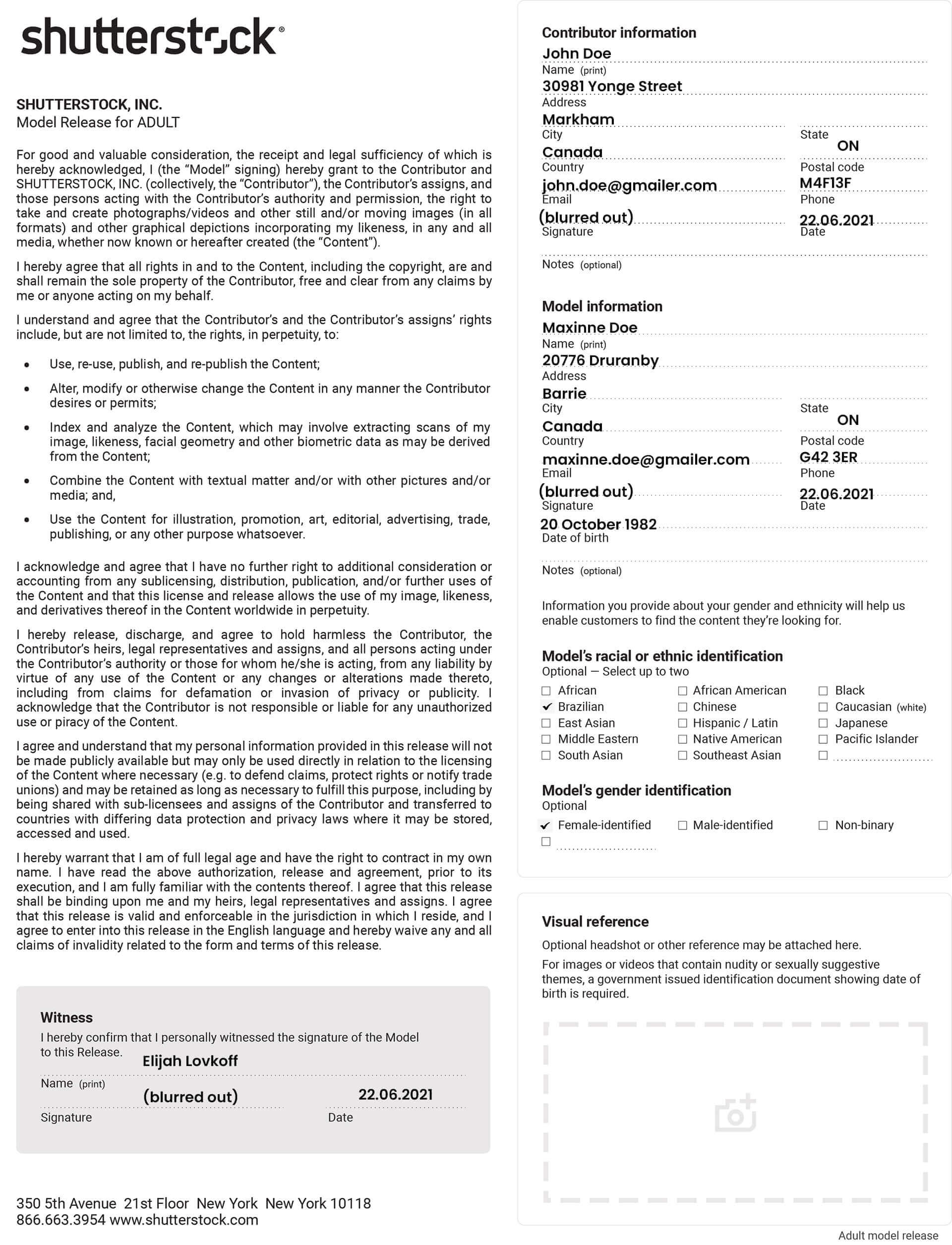
Adult model release filled using Shutterstock form
Filling out the forms
Model and Property Releases are usually self-explanatory and easy to fill as evidenced by a sample Shutterstock Model release posted above. In case you make a mistake, the agency will usually be quite specific and tell you where you’ve made a mistake. Once you log in to your contributor account, it can be downloaded from Shutterstock Legal Center.
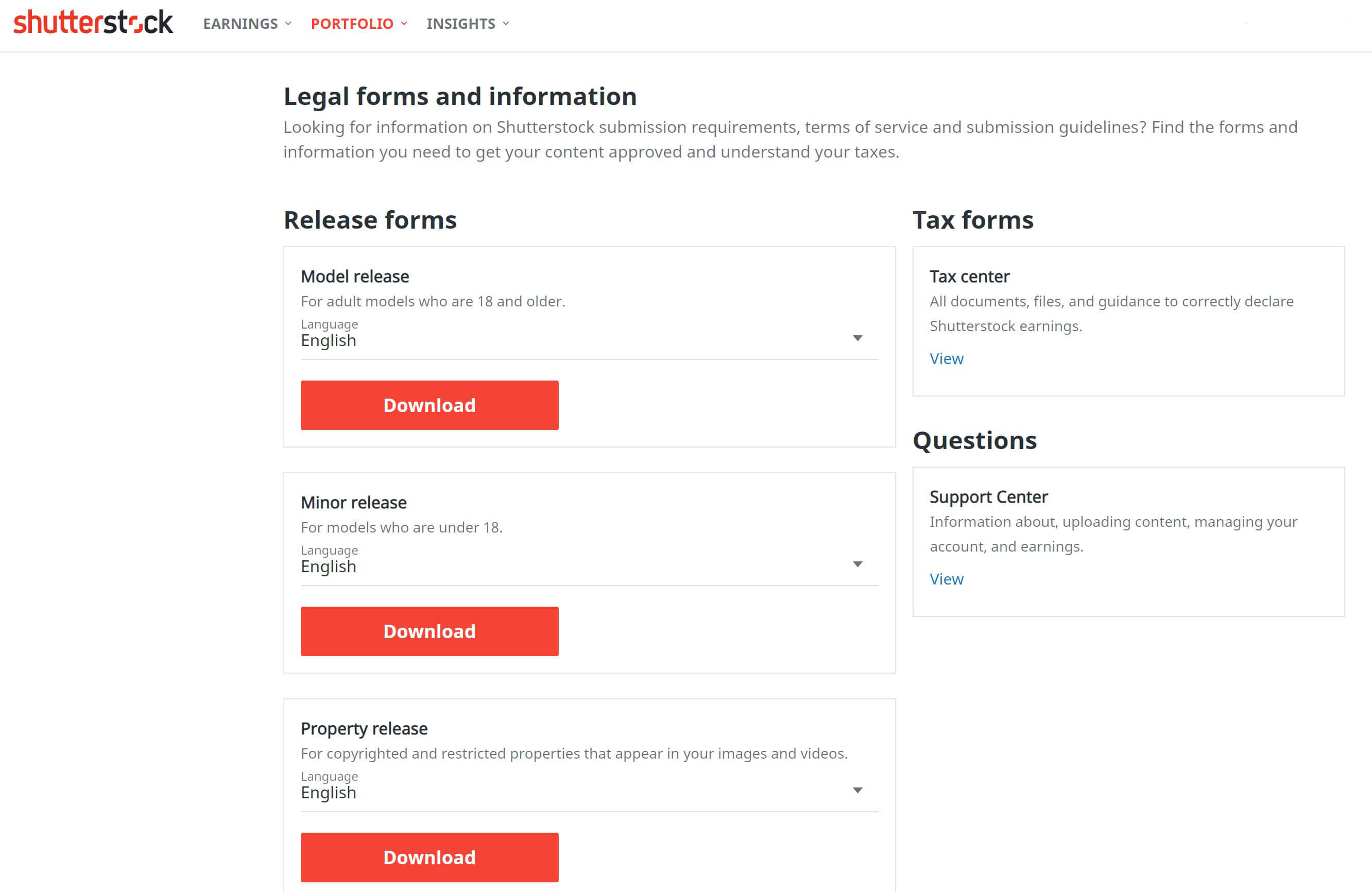
Shutterstock Model release center
Other stock agencies provide similar resources. Adobe releases can be downloaded here, and Getty one can be found here. Once your model or property releases are uploaded and attached to your content, you will have an option to manage these releases within your contributor account.
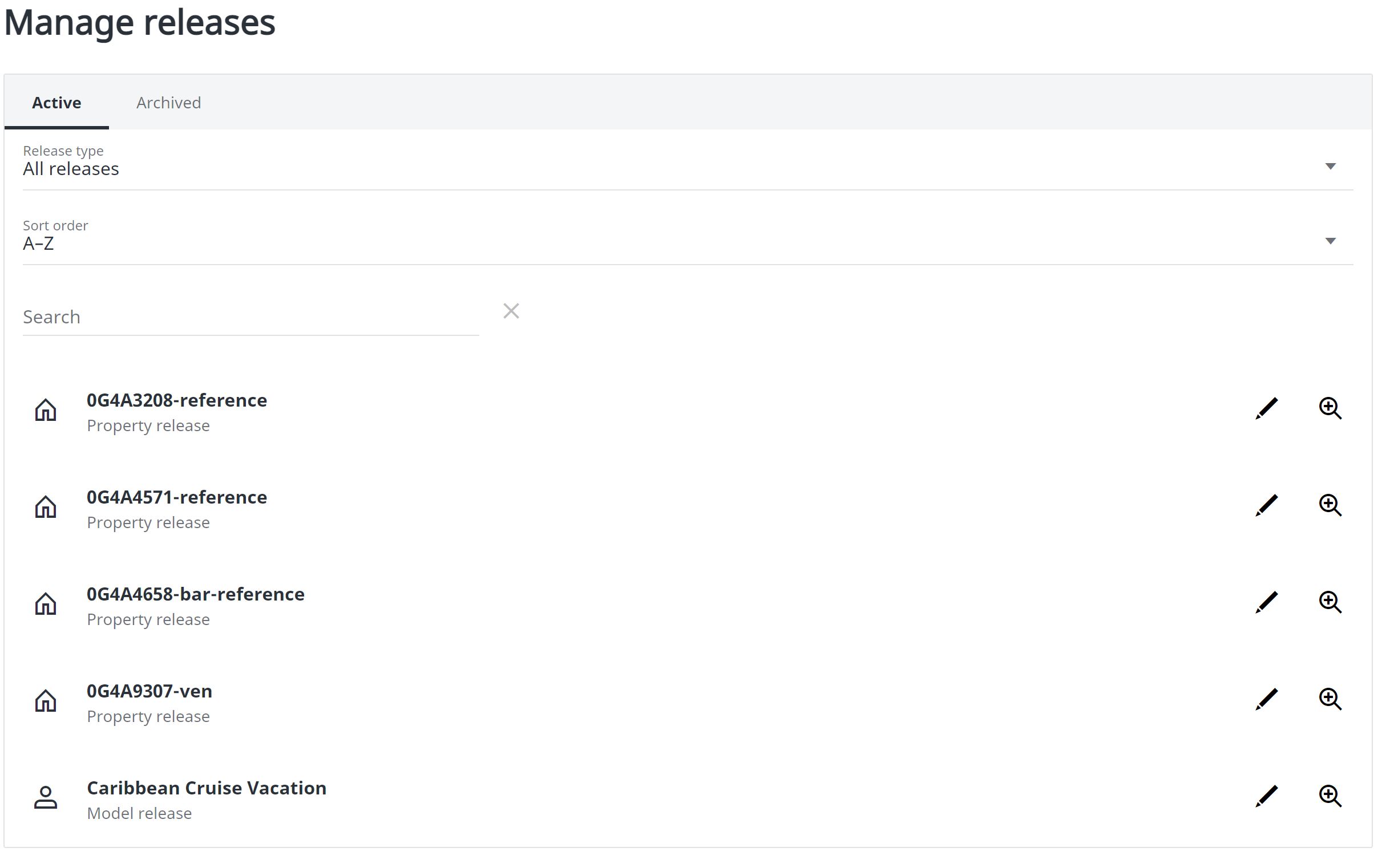
Shutterstock interface to manage releases
Creating model releases in software
As of Xpiks 1.7 you can create model and property releases fully in Xpiks! Releases are available in 3 languages: English, Spanish and Russian. All you need to do is to fill in the data of models, witnesses and author of the shot and Xpiks will generate a valid PDF for you.
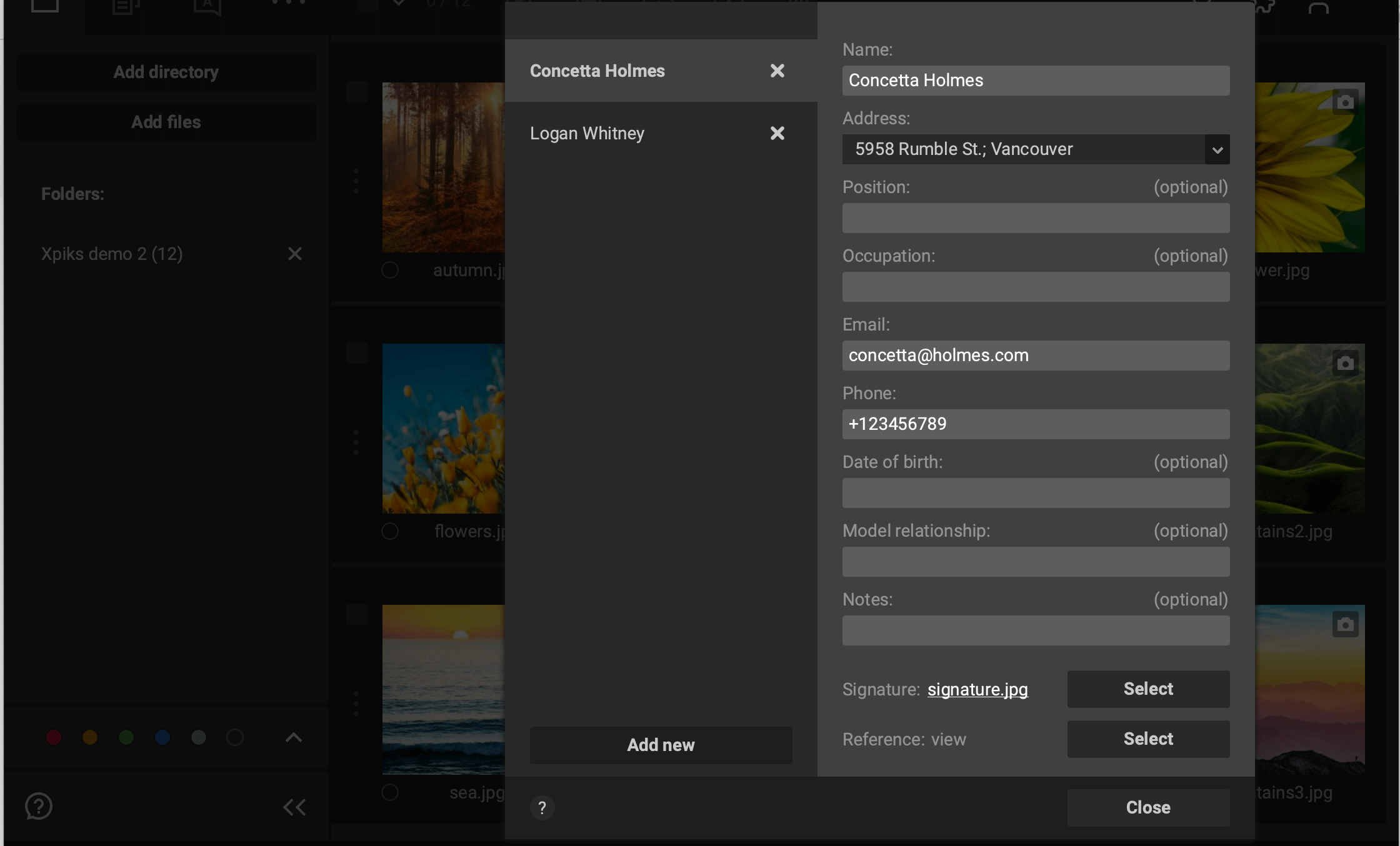
Add person information to create a model release
For vector artists and illustrators you can attach a reference image via property release and Xpiks will correctly add it to the PDF:

Reference to your illustration
Additional considerations for model releases
There are some special consideration cases when it comes to model releases:
Releases for minors
If your image or video contains a minor, you will need their parent or legal guardian to sign a model release on their behalf. Most model releases have a specific clause dedicated to it.
Models for erotic photography
If the model is nude or depicted in a sexual way but otherwise not recognizable, a model release is still required. The model release must include a copy of the model’s photo ID to verify that the model is an adult.
Voices recorded on video
If your video includes voices, you need a model release from the speaker, even if he/she seems unrecognizable. Sounds crazy!
Illustrations or vector artwork based on real people
You also need model releases for any illustrations or vector artwork based on real people or body parts. For example, you need a model release for a photograph that includes a face printed on a t-shirt or a photo portrait on a wall.
Silhouettes
If the subject of the image is your main focus (or if the distinctive features can be easily identified) then model release is needed. It may depend on how dark the silhouette is and there is room for interpretation.
Self-portraits
You need to include a model release for self-portraits. In this case, you must sign the model release as both the photographer and the model, which is bizarre but the way it is.
Factors to keep in mind
Recognition can be based on external factors. For example, other recognizable people, unique clothing, equipment, or location or personal factors, for example, tattoos or birthmarks. That’s why it’s always safer to get a model release, even for a close-up shot of a body part to avoid issues with models that wish to make a claim later on.
What if property or model release is not obtainable
In many situations, model or property releases are not obtainable. The most obvious case is that of engaging in:
- street photography
- shooting of the events with abundancy of people present
- shooting national landmarks, buildings or museums, etc.
For such scenarios as listed above, an editorial license can and should be used. You may earn slightly less than a commercial license (on average) but it’s the only way without jumping through too many hoops, including administration.
Download model releases for major microstock agencies
Here you may find links to adult, minor and property releases of all major microstock agencies. Note that usually they accept each other’s releases so you don’t need to fill a different one every time.
| # | Agency | Adult release | Minor release | Property release |
|---|---|---|---|---|
| 1 | Shutterstock | Adult release | Minor release | Property release |
| 2 | Adobe Stock | Model release | - | Property release |
| 3 | Depositphotos | Adult release | - | Property release |
| 4 | 123rf | Model release | - | Property release |
| 5 | Pond5 | Adult release | Minor release | Property release |
| 6 | Dreamstime | Model release | - | Property release |
| 7 | Alamy | Model release | - | Property release |
| 8 | CanStockPhoto | Model release | - | Property release |
Conclusion
Model and Property releases are needed when you submit images or videos with identifiable content that would potentially infringe on privacy laws. They are designed to provide legal coverage for your content and protect you from legal or financial complications that could occur otherwise. Learning the ropes of how to use model and property releases is not fun but this is a necessary and indispensable part of your life as a photographer.
Useful links




